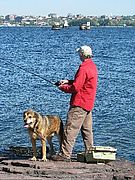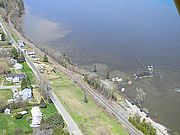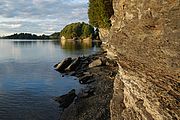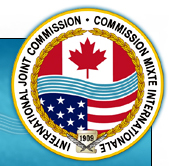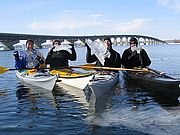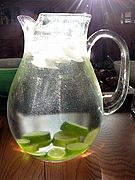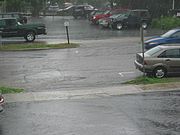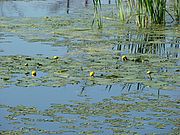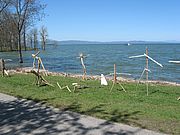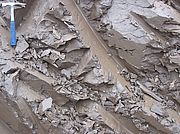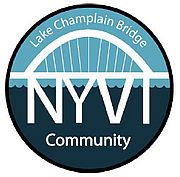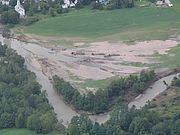Go out for Earth Day – outside that is. Take a stroll, a hike, a bike ride, a paddle, a run, or go fishing in the great outdoors. Breath some fresh air, take in the sunshine – or the rain, watch the stars. Commune with nature. Getting out into the greenery can boost your mood and your health. Research indicates that spending time in forests and nature areas helps people recover from stress and fatigue. MORE Read...
News from Selected Month
The International Joint Commission (IJC) has been asked to develop a plan of study concerning the record flooding of Lake Champlain and its tributaries, and of the Richelieu River which occurred in Spring 2011. In letters from the Governments of the United States and Canada, IJC is being asked to develop a study proposal which would examine the causes and impacts of flooding, as well as the full range of measures to prepare for, prevent and mitigate such impacts. MORE Read...
LCC’s work depends on the financial support of people and businesses that care about the lake and invest in our efforts to protect water quality, safeguard natural habitats and enhance recreational access. MORE Read...
On March 9, 2012 a field hearing of the House Agriculture Committee convened in Saranac Lake, NY to hear from agriculture producers on their views of the Federal Farm Bill. Every five years Congress has to reauthorize the federal Farm Bill. The current version expires at the end of September, so this year’s reauthorization coincides with an election year. The labyrinthine complexities of the bill are stupefying, but three areas stand out in their importance to protecting water quality in Lake Champlain: conservation programs, supply management, and support for diversified agriculture. MORE Read...
The International Joint Commission (IJC) will hold public hearings about a recently completed report identifying critical source areas of phosphorus loading to Missisquoi Bay. The hearings will be held at 7 PM on Tuesday May 1 at the St. Armand Quebec Community Center and Wednesday May 2 at the Swanton Vermont Village Municipal Complex. MORE Read...
Even if air temperatures seem balmy, the lake takes much longer to warm up. Additionally, strong currents and springtime debris are potential marine hazards this time of year. Lake Champlain temperatures are still in the 30s. If you are immersed in water that cold, exhaustion and unconsciousness can set in after 15 minutes. MORE Read...
As the weather warms we are more likely to turn to a nice cold drink of water to quench our thirst on a hot afternoon. Fill a pitcher and keep it in the refrigerator rather than running the tap until the water cools every time you need a drink. Doing so saves energy, saves water, and helps protect Lake Champlain. MORE Read...
Pollution loading from developed lands remains one of the most difficult sources of phosphorus to control. The Lake Champlain Basin Program (LCBP) recently released two requests for proposals for studies that could improve management of developed lands in the New York portion of the watershed. One project would outline a program to better manage New York back roads. MORE Read...
The Lake Champlain Committee has been working with the Vermont Agency of Natural Resources to help map aquatic natural resources in Vermont. The work is part of a larger project to produce a statewide map and supporting database identifying the lands and waters that support high priority ecosystems, natural communities, and habitats worthy of conservation or restoration. MORE Read...
Spring is a great time for finding driftwood on the shores of Lake Champlain. The wood can come from trees along forested shorelines that were undermined by wind and wave erosion, but more commonly it is delivered by streams and rivers entering the lake. Once in the lake, driftwood can remain afloat for long periods of time. In Oregon’s Crater Lake one piece of 9 meter long driftwood known as ‘the Old Man of the Lake’ has been floating around since at least 1896. MORE Read...
Delve into the rich history of clay soils and the agricultural, engineering, and environmental challenges they pose at the Champlain Valley Clay Symposium on June 1. MORE Read...
Activities will span the weekend and both sides of the bridge, with programs taking place at Chimney Point and Crown Point historic sites. Stop by LCC's table for paper and paint and share your artistic vision of a clean lake. Other celebration events tentatively include a gala opening ceremony, hometown grand parade from Vermont to New York, a Farmers' Market, fireworks and more! MORE Read...
Join us for a beginner-intermediate conference on river science issues specifically designed for municipal officials, consultants, contractors, legislators, curious citizens, watershed group members and farmers. Using case studies, speakers will discuss the various aspects of what makes rivers stable - or unstable - such as: gravel extraction, roads and bridges, agricultural practices, downtown development, stormwater, dams and flood plains. MORE Read...
Way to Go is an annual program co-founded by LCC to promote the use of cheaper, healthier, earth-friendly alternatives to driving alone. Individuals, businesses, schools, and organizations can all participate. Sign up online and your pollution, gas and money savings will be calculated and you'll be entered into a drawing for great prizes! MORE Read...

